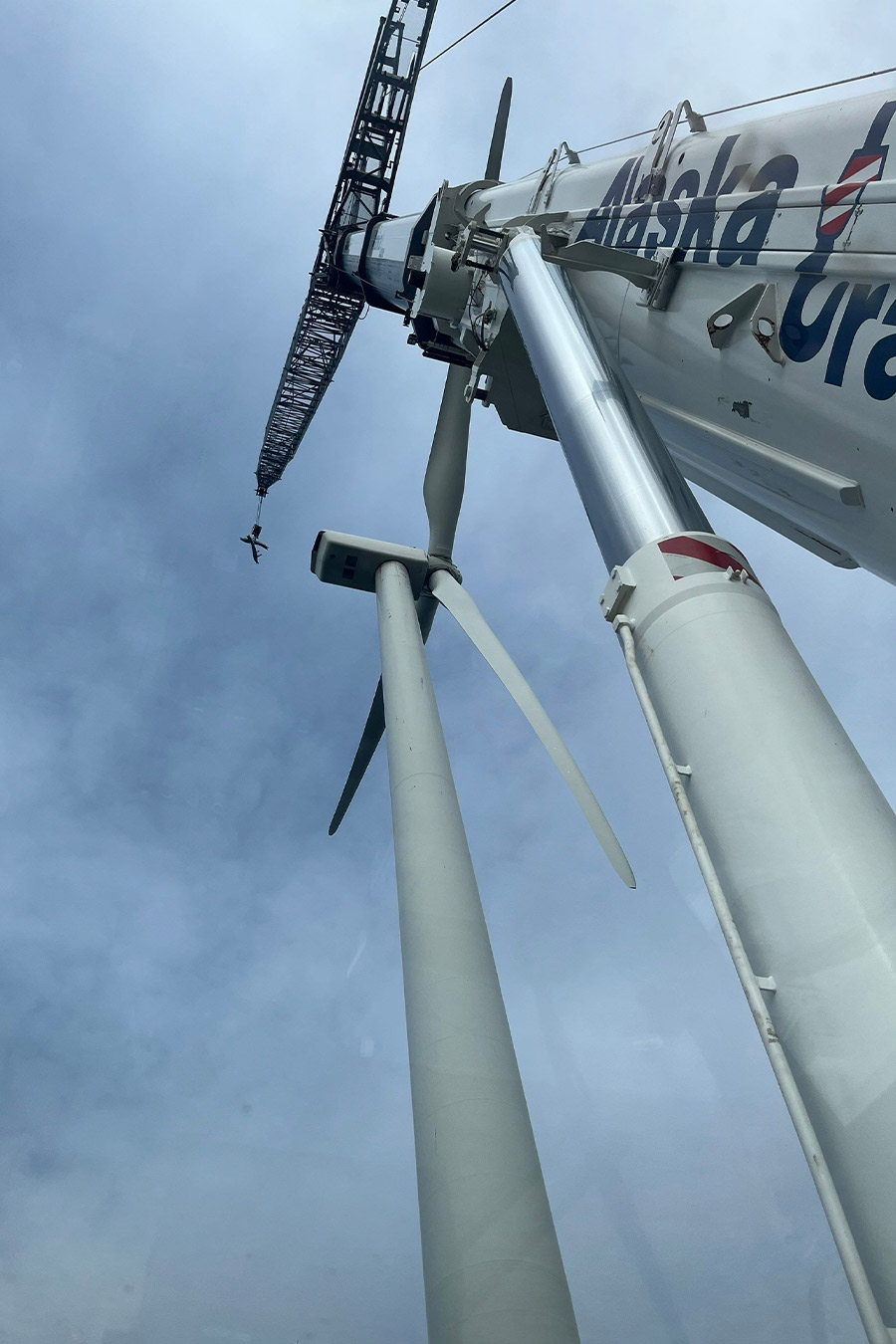


Raising the Bar
or more than two decades, Alaska Crane has been a cornerstone of the state’s heavy-lift industry. Since the company was established in 2001, Alaska Crane company leaders have dedicated themselves to meeting the needs of the company’s Alaska clients, specializing in high-quality crane service.
“We’ve been pulled into many different projects over the years, from railroad bridges to lifting ships out of the water, showcasing the versatility and importance of our work across the state,” says Brennan Walsh, president of Alaska Crane and STG Incorporated, both of which are owned by Calista Corporation.
With a fleet capable of handling loads ranging from 28 to 660 tons and crane boom lengths exceeding 400 feet, Alaska Crane prides itself on its robust arctic-grade capabilities, which allow its equipment to perform under the most extreme conditions.
“Our entire fleet of arctic-tough cranes can brave temperatures as low as -40°F,” says Walsh, “making these winter workhorses ideal for year-round, cold-weather operations across Alaska.”
Although it operates out of Anchorage, Alaska Crane serves every region in the state. It’s equipped to tackle both contract-based projects and call-out services that are tailored to client needs. The company employs a small but highly skilled team, averaging between six and ten employees, which allows for a personalized approach to each project, Walsh says.
“I’m always impressed with the skill sets and capabilities of our team,” says Walsh. “Being a small crane service company, they are exposed to a wide array of projects and challenges.”
President, Alaska Crane

Above, Alaska Crane’s equipment stands ready to support renewable energy efforts at the Fire Island Wind project.

Views from the ground (left and below) detail the precision required by operators to use its Liebherr LTM 1500, a 600-ton capacity all-terrain crane, to replace a gearbox on a wind turbine for the project, a testament to the team’s technical expertise.

Reflecting on his journey, Dooley notes, “It’s been a long career path for me, but I think I’m finally in a position where I could stay at home.”
“Our role was to provide the crane support for GE’s technicians to perform maintenance on two turbines, including replacing gearboxes to prevent potential internal failures,” says Dooley.
Alaska Crane mobilized in August and faced multiple weather days due to 25 to 30 mile per hour winds, which created hazardous conditions for moving equipment across the Cook Inlet.
Despite the challenges, Alaska Crane completed the project by mid-September, which demonstrated its adaptability and commitment to safety, says Dooley.
“Working closely with Fire Island Wind, GE, and Alaska Crane, we maintained constant communication to ensure everyone was on the same page, working towards completing the job efficiently,” says Dooley.
Chris Jimenez, senior operations manager at CIRI, had nothing but positive feedback for the work Alaska Crane performed on Fire Island.
“Alaska Crane’s team and equipment were essential to the success of the Fire Island Wind project, handling large, heavy components with ease,” says Jimenez.

Despite high winds, Alaska Crane’s careful planning and execution ensured minimal impact on the project timeline. Jimenez praised Alaska Crane’s strict protocols.
“Alaska Crane’s strict safety protocols created a secure environment on-site and kept the project on track without delays. Working with Alaska Crane’s operators and riggers was a positive experience. Their high level of professionalism and flexibility made a real difference in project execution.”
The company’s focus on safety earned it an Excellence in Safety award at the 2024 Associated General Contractors of Alaska annual convention in November. Read more about the award on page 50.
“Our commitment to skill sets and safety has allowed us to thrive for over twenty years,” says Walsh.
Some key projects include extending the Sitka Blue Lake Dam in 2013, installing railroad and highway bridges, lifting ships out of the water for inspections, helping recover aircraft that traveled off runways, and changing out jumbo jet engines at Ted Stevens Anchorage International Airport. Sometimes Alaska Crane sets down hot tub units, too, Walsh says.
“It’s a pretty wide variety of projects we get involved with, but we try to approach them all the same, whether it’s a hot tub unit or a bridge girder. From a planning and safety perspective, we try to get in, get out, and bring value to the customer and the job.”